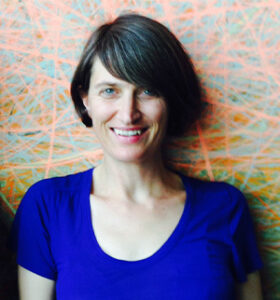When Kaja Kühl mentions construction, she’s thinking less in terms of concrete and steel and more about straw, hemp, hardwoods and eelgrass.

Kaja Kühl. Photo Courtesy: CCNY
The adjunct associate professor at City College’s Spitzer School of Architecture has long been fascinated with natural, locally sourced materials — now she’s putting that passion into play through her latest project: The Northeast Biobased Material Atlas.
The Atlas, is one of several $10,000 Independent Projects grants Spitzer faculty members were awarded from the New York State Council on the Arts and the Architectural League of New York. Kühl and her co-instructor Anoushae Eirabie’s attempts to visualize a new kind of construction supply chain as one that works with the land, not against it.
“I wanted to better understand the existing ecosystem of our regional landscapes as resources,” Kühl said. That includes the networks of foresters, farmers, contractors and designers already working with biobased materials, often outside the spotlight.
Kühl is especially interested in materials that can be grown locally in the American Northeast, such as timber, straw and hemp. While 60% of the land in the region is forested — primarily with hardwoods — she’s also intrigued by lesser-used resources like coastal plants.
Growing up on the Baltic Sea, she saw firsthand how reeds and eelgrass were once common in construction. Now, she’s exploring whether the Northeast’s diverse but fragmented landscapes can support something similar.
“The practice of building with these materials has been lost almost entirely in the U.S.,” Kühl said.
What makes the Atlas stand out is not just the materials. It is the philosophy it proposes: a shift from industrial building models to what Kühl calls bioregional construction. Inspired in part by Indigenous building practices, bioregional construction calls for using materials sourced within the immediate environment, shrinking greenhouse gas emissions from transportation and manufacturing.
The hyperlocal lens extends from supply chains to climate strategy. Much of the building industry has focused on reducing operational emissions from heating, cooling and lighting, but Kühl points to the overlooked impact of embodied carbon, or the emissions associated with the production of building materials themselves.
Biobased materials, she explains, actually store carbon as they grow. If properly harvested and integrated into construction, they can function as carbon sinks.
“Imagine the amount of carbon we could store in one million [housing] units,” Kühl said in reference to the current shortfall of homes in the Northeast. The built environment is responsible for 40% of emissions; the impact would be massive.
Still, the path forward isn’t easy. U.S. building codes, material certifications and aesthetic norms still largely favor synthetic and extractive materials.
“These regulations were developed to protect us,” she said, “But they also support a materials industry that created some pretty toxic environments — for both human and planetary health.”
She’s aiming to make alternatives more tangible as part of the Atlas project will feature Kühl and her team developing three housing prototypes to demonstrate how carbon-storing design can work at scale. She hopes the examples will help architects and policymakers alike imagine a new standard of building based on regeneration, not depletion.
While youarethecity — her independent research and consulting practice — has long focused on participatory design and stakeholder engagement, Kühl says this project offered something a little different: a chance to sit down, reflect and create.
“This research is actually something I wanted to do to take a little break from facilitating other people’s agency,” she said. “But of course, the goal is to share it with those who might be empowered by this knowledge.”
That includes her students at Spitzer. A recent studio she co-taught, Homegrown: Designing Housing as Carbon Storage, explored many of the same themes as the Atlas.
“I learn from and with students all the time,” Kühl said. “It is my biggest motivation for teaching.”
Judah Duke is a journalist who graduated from CUNY Baruch College in 2024 with a degree in Journalism. He has reported on business, real estate and the environment across Texas and New York City and is currently pursuing a master’s degree at Columbia Journalism School, specializing in investigative reporting.